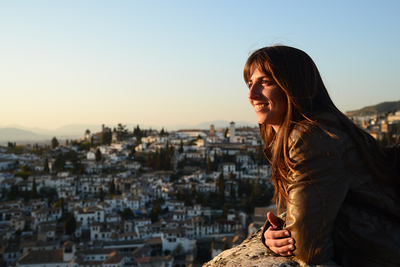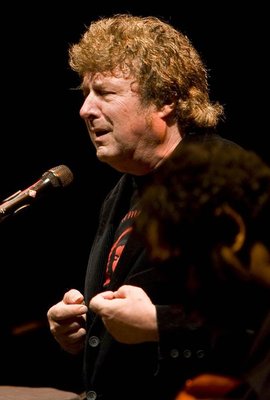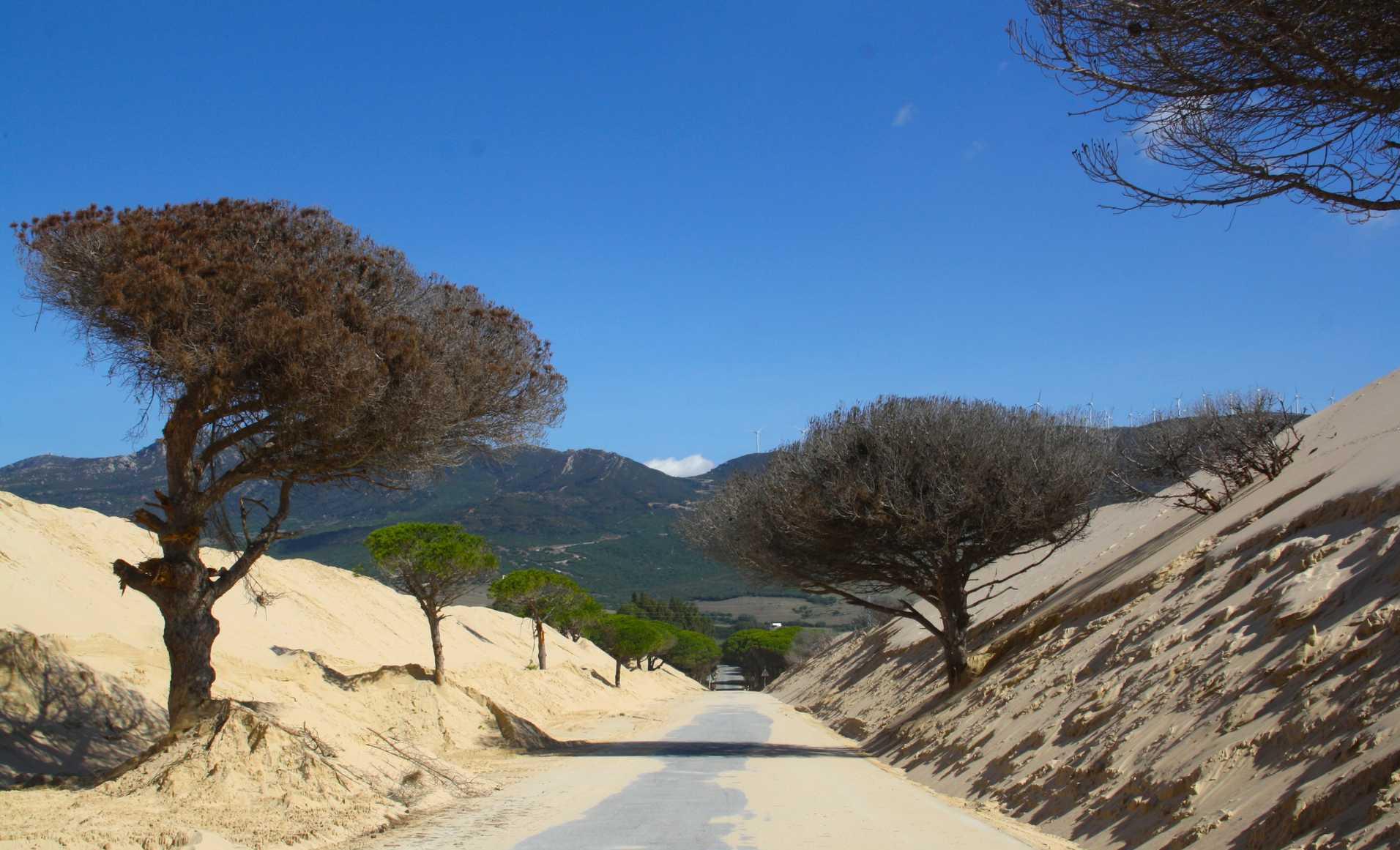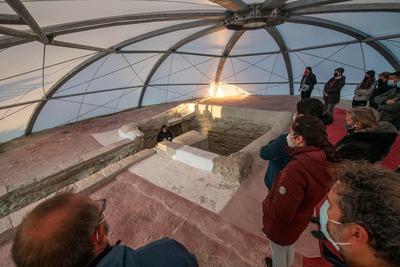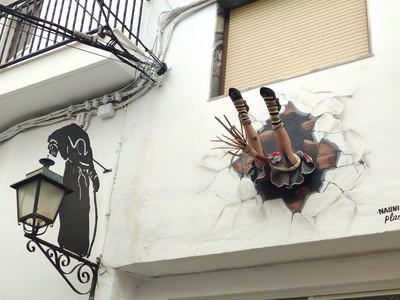Granada, the dream of Enrique Morente

From orthodox tradition, you move towards complete creativity and heterodoxy, which allows you to blend his art with that of artists from other musical dimensions like Leonard Cohen or Pat Metheny.
Enrique Morente (Granada, 1942- Madrid, 2010)
Flamenco singer. He grew up in Albaicín in Granada and the prestige of Enrique amongst Flamenco professionals increased considerably when he joined the group of artists in Zambra, quite a fellowship.
At the end of the 1960s, the encounter between Enrique Morente and Manolo Sanlúcar took place, the start of long professional relationship. One of his most audacious and original artistic experiences was the premier in Granada in 1988 of the show "El Loco Romántico" (The Mad Romantic), based on the masterpiece by Cervantes, Don Quixote de la Mancha.
That same year (1988) he premièred "Misa Flamenca", with lyrics by San Juan de la Cruz, Fray Luis de León, Lope de Vega and Juan de la Encina; he recorded "En la Casa Museo de Federico García Lorca, with lyrics by Lorca. He is the Flamenco singer who borrowed most from the poets.
En 1994, Morente was the first Flamenco singer to receive the National Music Prize awarded by the Ministry of Culture. In February 2006 he appeared on "Morente sueña la Alhambra" together with Pat Metheny. The record was also recognised in the National Music Awards. In June of that year he was awarded the "Medalla de Oro al Mérito en las Bellas Artes".
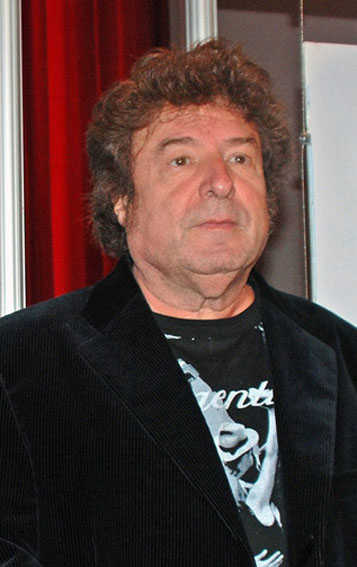
Enchanting tours
"Las mimbres del río/ Iban con Bernarda/ La Alhambra lloraba/ Cantando Fernanda". (The poem "The Alhambra wept", adapted in "Morente sueña la Alhambra")
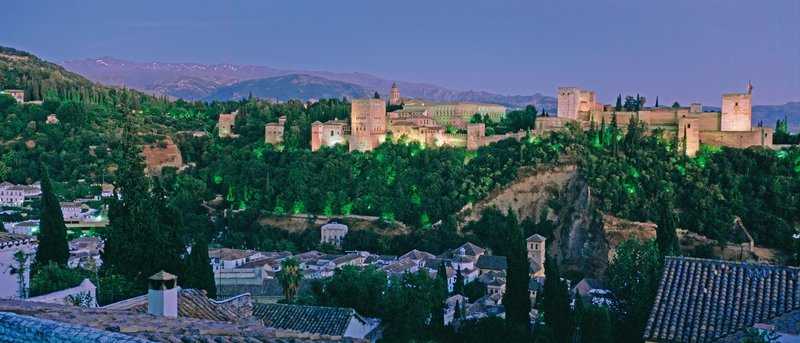
The charm of Granada
For Enrique Morente it was impossible to fall under the spell of Granada, a city with a magical, mysterious atmosphere, the origin of which outsiders are not quite able to place: perhaps it is the melancholic character of the Paseo de los Tristes that runs alongside the Darro river, or the rural atmosphere of some of its streets or historical heritage of its stones that not long ago were mosques, or the Madrazas or the Nasrid palaces.
The Nasrid sultanate of Granada was the last Moorish political grouping in the Iberian Peninsula: over a period of more than 250 years, the sultans deposited here one of the most valuable legacies of Muslim artistic heritage. La Alhambra, Al-Hamra, which means "red fortress" in reference to the clay used in its construction, is the finishing touch to this delight comprising streets, nooks and crannies, hills and little corners where the Islamic imprint is evident.
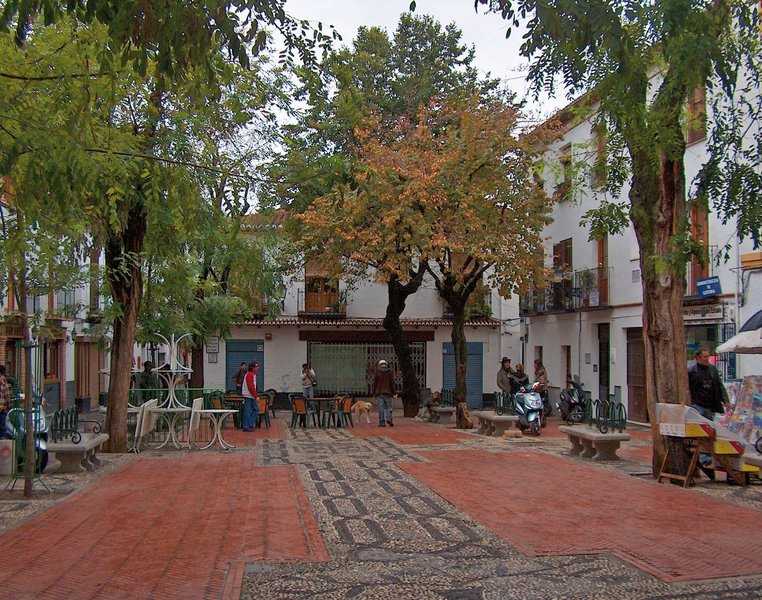
The suburb of El Albaicín
Enrique Morente or Enrique el Granaíno, as he was known at the start of his musical career, stated that what he most liked about Granada was the fruit of the same name (the grenadine), "because the seeds look like rubies”. Amongst his favourite places in this Moorish city were many of those which are related to Flamenco singing and dancing, others to the night, and a good number with the neighbourhood where he was born, El Albaicín. The urban complex comprising the suburb of Albaicín, the old "Alcazaba" and the district of Axares began to be known as the Albaicín during the final years the Nasrid period.
This district, together with Sacromonte is one of the most unique in the city, a maze of steep streets that take the tourist's breath away, not only because of its picturesque little corners but also its steep slopes. It was declared a World Heritage Site by UNESCO in the early 1980s.
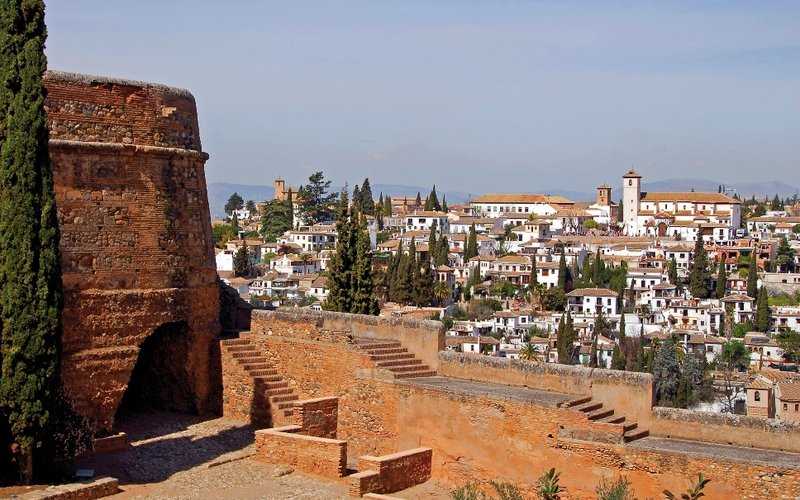
In El Albaicín you'll find one of the great attractions of the city of Granada: the lookout point of San Nicolás. This balcony offers views of a magnificent image of La Alhambra and is an obligatory stop for travellers coming from all over the world.
There are numerous Cármenes, a word which comes, as you might expect, from Arabic and which means vineyards. It is a traditional dwelling with a small orchard or garden. Morente was particularly fond of that of La Estrella.
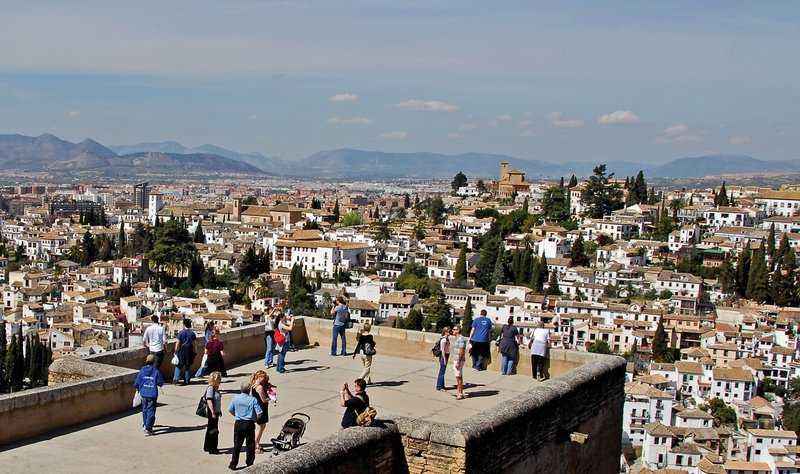
the road beside the Darro
At dusk or even after night has fallen one of the most picturesque places to take a stroll is along the Paseo de los Tristes, beside the Darro, which goes from the Cuesta del Chapiz to the Plaza Nueva. The Darro pathway runs alongside the river, and the at the foot of the Alhambra, crossing the district of Axares, also known as San Pedro. It is a luxury to stroll beside the water accompanied by the reddish reflections of the Alhambra: the name of the river, Darro, seems to derive from the expression "d'auro" (golden) and the presence of this metal has been known about since Roman times.
On this pathway you'll find the baths of El Nogal, and the Bañuelo, national monument since 1918. The building was part of the Nogal mosque, now disappeared, and was one of the most outstanding of the many baths which existed in the medina and its surroundings. You shouldn't miss the Moorish numerous water cisterns dotted around this area. And you must also try the delicious cuisine of Granada, where the tapa reigns supreme, in any of the streets and squares along the route, such as the Plaza Nueva or the Plaza Larga.

Flamenco in the Sacromonte
Only one street, the Cuesta del Chapiz, separates the Albaicín from the Sacromonte, another magical place for Morente and whose name is associated with the gypsies who inhabit it and the prickly pear bushes that mark its boundaries. Located in the Valparaiso valley, above the cliffs of Los Negros, the highlight is the unusual cave-houses whose origins are not very clear.
They are said to have been built in the 16th century when the Moors were expelled from their houses. They were joined by the gypsies, and so what is now a centre of attraction for tourists because of its Flamenco shows was originally the dwelling place of the outcasts.
"The Sacromonte is a beautiful neighbourhood which has seen many artistic performances and still does” commented Morente.
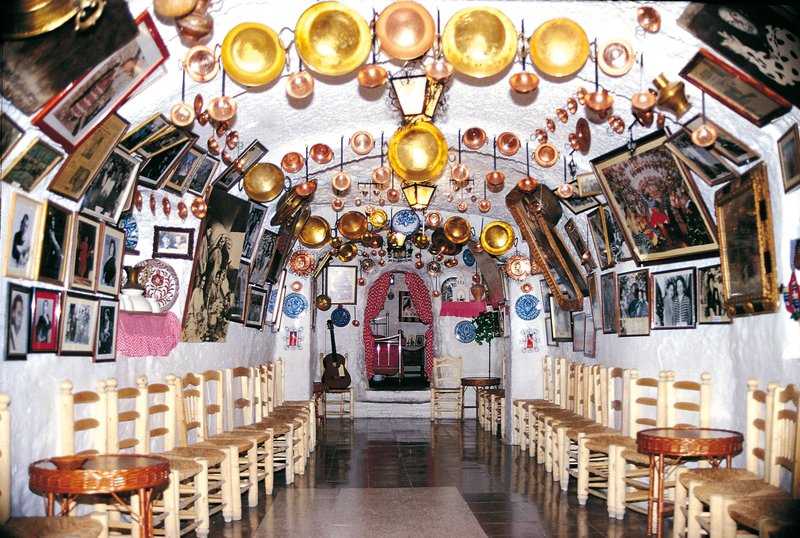
"Morente Sueña la Alhambra"
This fortress-palace of the Sultans, is located on the hill of La Sabika, and was once the seat of Nasrid power. In the interior you'll find the palatial city which comprises three areas: the military fortress, the Nasrid palaces and the rest of the residential and productive city.
The love story between Morente and the Alhambra goes back a long way and came to light, for example, in an album published in 2006, entitled "Morente Sueña la Alhambra". Morente, born into a humble family and having to work from very young age, he even worked occasionally as a tour guide there, and in those times when is was not necessary to have specific qualifications for this.
The "Patio de los Arrayanes", the "Patio de los Leones" and the palace and gardens of El Partal were among his favourite places. "There is a pathway which I really like, I seem to remember that it was the old road to the cemetery. It takes you from the gateway of the Generalife to the Paseo de los Tristes and it is a wonder”, he commented.
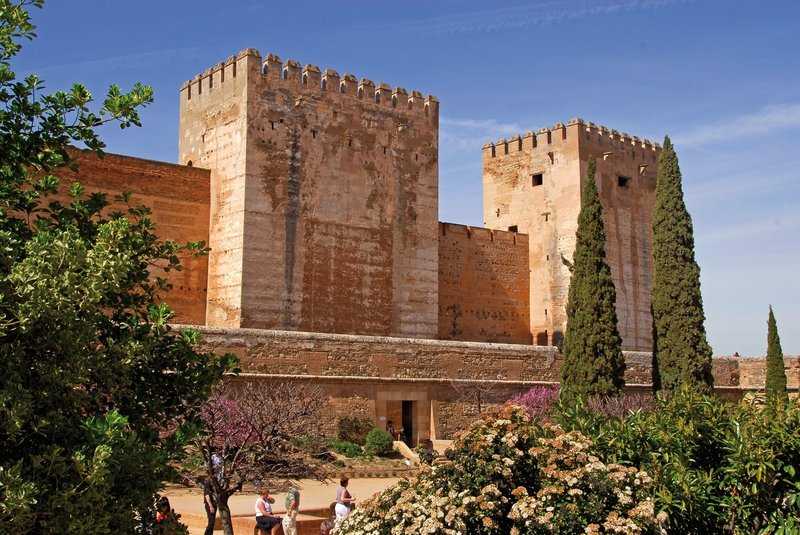
Routes
- Walk 1: "Carrera del Darro", starting in the Plaza Nueva - Royal Chancery - Pilar del Toro and vaulted passage of the river Darro - Palacio de los Córdova.
- Walk 2: Church of San Cristóbal and its water cistern - Church of San Bartolomé Church and its water cistern - "Muralla del Albayzín" (Nasrid Wall) - Gateway of Fajalauza or the Almendros - Cistern of San Luis - Moorish house of Yanguas.
- Walk 3: Cistern of the Plaza del Salvador - Church and courtyard of El Salvador and the central mosque of the Albayzín - Tower and cistern of Bibalbonud - San Nicolás Lookout point: Church of San Nicolás - Hizna Román Gate - "Aljibe del Rey" (King's Cistern).

